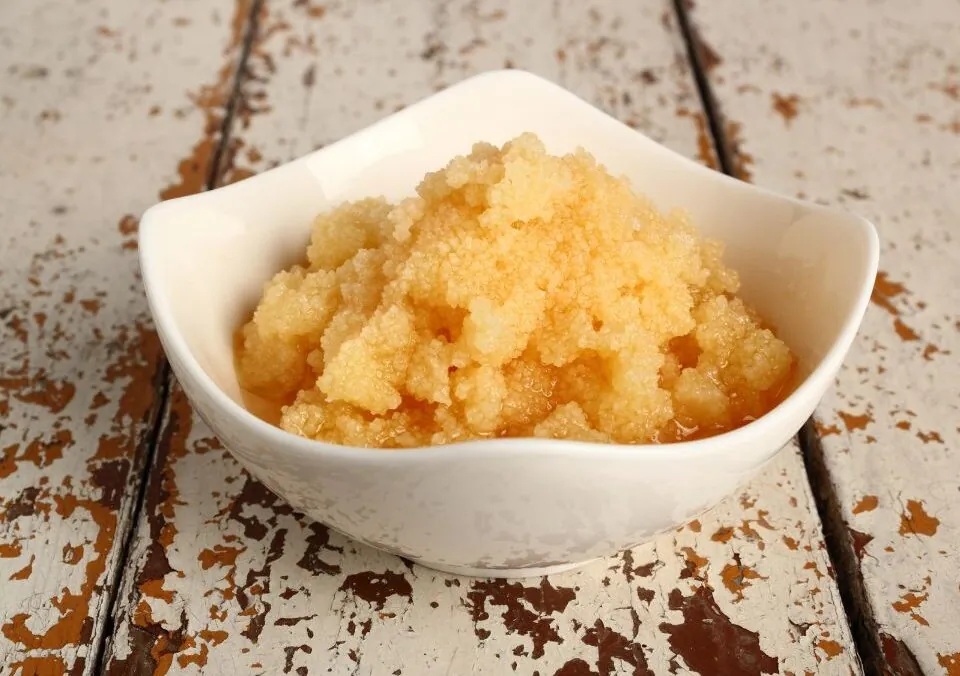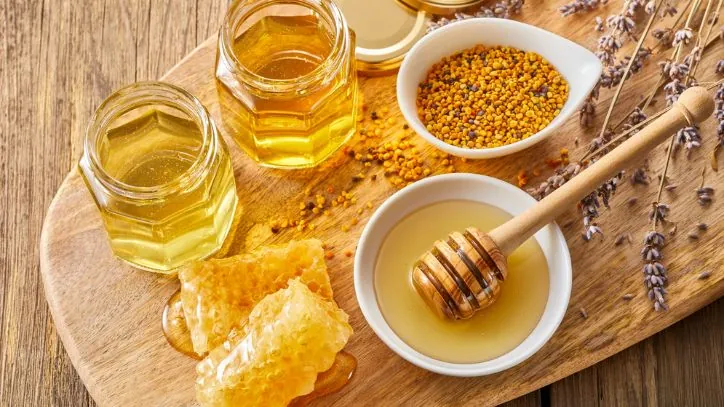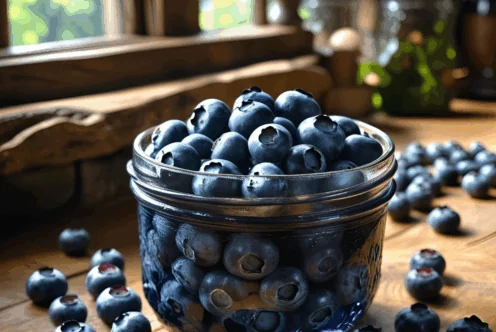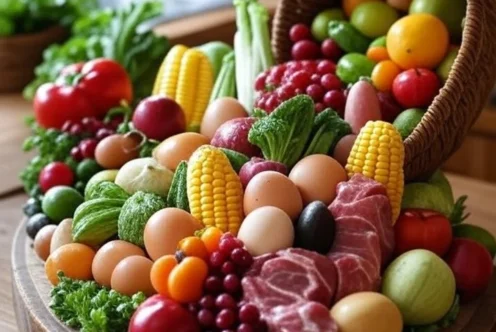Blog
Did Your Honey Crystallize? No Problem!

Do you always keep a jar of raw honey sitting on your counter or in your pantry? If so, you’ve probably noticed that, over time, the honey has changed color and developed a grainy texture. This phenomenon is known as crystallization, and while you might be concerned about it, it’s a common occurrence that doesn’t indicate a loss in quality. To delve deeper into this topic, I quizzed my younger brother, who owns beehives and runs a raw honey business, about crystallization and its implications.
What Causes Honey to Crystallize?
Understanding Crystallization
Raw honey crystallizes because it is a supersaturated sugar solution composed of water, glucose, and fructose. The process begins when the water content in honey separates from glucose. This separation leads to the formation of crystalline structures. It’s essential to understand that crystallization is a natural and expected behavior of raw honey and does not mean the honey has gone bad or is old.
Scientific Background
According to various studies, the composition of honey is approximately 80% sugars (primarily fructose and glucose) and 18% water, with trace amounts of minerals, vitamins, and enzymes. The ratio of glucose to fructose plays a key role in how quickly honey will crystallize. Honey with a higher glucose content will crystallize faster than honey with higher fructose levels.
For a deeper dive into the chemistry of honey, resources like the National Honey Board provide comprehensive information on honey’s composition.
Factors Influencing Crystallization
Several factors contribute to the speed and nature of honey crystallization:
- Nectar Source: The floral source of the nectar is one of the most significant factors influencing crystallization. For instance, honey derived from the nectar of mesquite tree flowers crystallizes much faster than honey from clover. Different flowers have varying sugar compositions, and this can affect the rate at which honey crystallizes. You can explore more about different types of honey on The Honey Association’s website.
- Raw vs. Processed Honey: Raw honey is more prone to crystallization than processed honey because it retains more of the natural elements found in honey, such as pollen and beeswax. Processed honey has been filtered and pasteurized, which removes some of the components that facilitate crystallization. This is why it is essential to recognize that not all honey is created equal; raw honey has unique qualities that contribute to its flavor, texture, and health benefits. For more details on the differences between raw and processed honey, visit the BCB Honey Farm.
- Temperature: Storing honey at lower temperatures can accelerate the crystallization process. Ideally, honey should be kept at room temperature. If it’s stored in a cooler environment, such as a refrigerator, this could increase the likelihood of crystallization. Conversely, higher temperatures may slow the process but can damage the properties of raw honey.
- Water Content: The moisture level in honey is crucial. Honey with higher water content tends to crystallize more quickly because it facilitates glucose’s separation from water, leading to crystal formation. Proper harvesting and storage techniques can help maintain the ideal moisture level in honey.
- Presence of Nuclei: Crystals in honey typically form around tiny particles present in the honey, such as pollen or air bubbles. This means that honey with more impurities or natural particles is more likely to crystallize. Raw honey, being less processed, usually contains more of these natural elements.

Is Crystallized Honey Safe to Eat?
Absolutely! Crystallization does not affect the safety or quality of honey. In fact, many people enjoy crystallized honey for its unique texture and ease of spreading. If you prefer the liquid form of honey but find that yours has crystallized, you can gently re-liquefy it.
How to Re-Liquefy Crystallized Honey
If your honey has crystallized and you prefer it to be liquid, here’s how to restore its original state without damaging its beneficial properties:
- Heat in a Double Boiler: Set a pot of water to simmer and place your jar of crystallized honey in the pot. The gentle heat will gradually liquefy the honey without exceeding 100-110 degrees Fahrenheit. This temperature range helps preserve the naturally occurring enzymes and nutrients in raw honey.
- Avoid the Microwave: It’s tempting to use a microwave to speed up the process, but this method can introduce hot spots that may exceed the safe temperature, damaging beneficial components. Always opt for gentle heating methods.
- Store Properly: To prevent crystallization after re-liquefying, store your honey at room temperature in a tightly sealed container and keep it away from moisture.
Benefits of Raw Honey
Aside from being a natural sweetener and a delicious addition to various dishes, raw honey offers numerous health benefits, which may vary based on its floral source and composition:
- Rich in Antioxidants: Raw honey contains a range of antioxidants, including phenolic acids and flavonoids, which can help combat oxidative stress and inflammation.
- Antimicrobial Properties: Honey has natural antimicrobial properties, which can make it effective for treating minor wounds and burns. Studies show that honey can inhibit the growth of certain bacteria and fungi.
- Sore Throat Relief: Many people use honey as a home remedy for soothing sore throats. Mixed with lemon in warm water, it can provide relief while also offering a pleasant taste.
- Digestive Health: Raw honey contains prebiotics that nurture beneficial gut bacteria, potentially aiding in digestion and overall gut health.
- Skin Benefits: Due to its moisturizing and healing properties, honey is a popular ingredient in skincare products and can be used in face masks or as a natural moisturizer.
For more comprehensive health benefits of honey, you can refer to resources from the World Health Organization (WHO) and other health-related websites.
Understanding Honey Labels
When purchasing honey, it’s essential to understand the labeling to make the best choice for your needs. Here are a few terms you might encounter:
- Raw Honey: Honey that has not been heated above natural temperatures nor filtered, retaining its natural enzymes and nutrients.
- Pure Honey: Honey that is not diluted with any other substance. It may still be processed or heated.
- Organic Honey: Honey that comes from beekeepers who follow organic farming practices and doesn’t utilize chemical treatments or antibiotics in beekeeping.
- Wildflower Honey: A blend of nectar from various flowers. The flavor and appearance can vary depending on the region and season.
- Comb Honey: Honey that is sold in the wax honeycomb, often harvested directly from the hive.
Honey Varietals and Their Properties
Each type of honey has unique flavors, colors, and properties influenced by the floral sources of nectar. Here are a few popular types of honey:
- Clover Honey: Light in color and mild in flavor, clover honey is one of the most popular varieties consumed in the U.S. It has a pleasant sweetness with a hint of floral notes.
- Manuka Honey: Native to New Zealand, manuka honey is famous for its powerful antimicrobial properties. It is often sought for its health benefits and is typically more expensive than other types.
- Buckwheat Honey: Dark and rich with a distinct flavor, buckwheat honey is higher in antioxidants. Its bold taste makes it a great choice for baking or pairing with strong cheeses.
- Lavender Honey: This fragrant honey arises from bees collecting nectar from lavender flowers. It has a floral aroma and a mild taste, perfect for teas and desserts.
- Eucalyptus Honey: Known for its medicinal properties, eucalyptus honey has a strong flavor profile with a hint of menthol. It is often used in cough syrups and natural remedies.
For more information on different varieties of honey and their characteristics, check the National Honey Board.
The Debate on Honey Processing
The discussion around raw versus processed honey is a hot topic among honey enthusiasts and health-conscious consumers. While both types serve their purpose, raw honey is often regarded as the superior option for its natural state and health benefits. Processed honey, while smoother and more shelf-stable, loses many of the beneficial properties during heating and filtering.
Those concerned about the quality of honey should consider sourcing raw honey from local beekeepers. Supporting local beekeepers not only ensures that you get raw, high-quality honey, but it also contributes to the local economy and promotes sustainable practices.
Conclusion
In summary, crystallization is a natural process that occurs in raw honey due to its composition and environmental factors. It doesn’t impact the safety or quality of the honey, and many people appreciate its unique texture. By understanding the science behind honey crystallization and the benefits of raw honey, you can make informed choices about this delightful and healthy food.
For further exploration of the world of honey, whether it’s to educate yourself further or to find some amazing local products, be sure to check out my brother’s Facebook page for pictures of bees, more information about their raw honey, and ways to place an order.
For additional articles and insights into bees and honey, the Fill Your Plate blog is a fantastic resource. So, whether you embrace your crystallized honey or prefer it runny, remember that every jar holds a snapshot of nature’s remarkable process. Enjoy the sweet benefits!
By Heide Kennedy, Arizona Farm Bureau Communications Intern


















